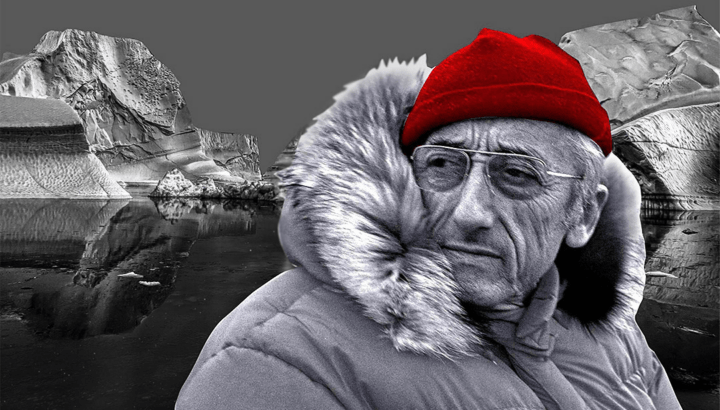
Jacques Cousteau: Dive with Noble Purpose
“The sea, once it casts its spell, holds one in its net of wonder forever.” Jacques Cousteau In an era when technology was beginning to shrink it, Jacques Cousteau expanded the world. […]
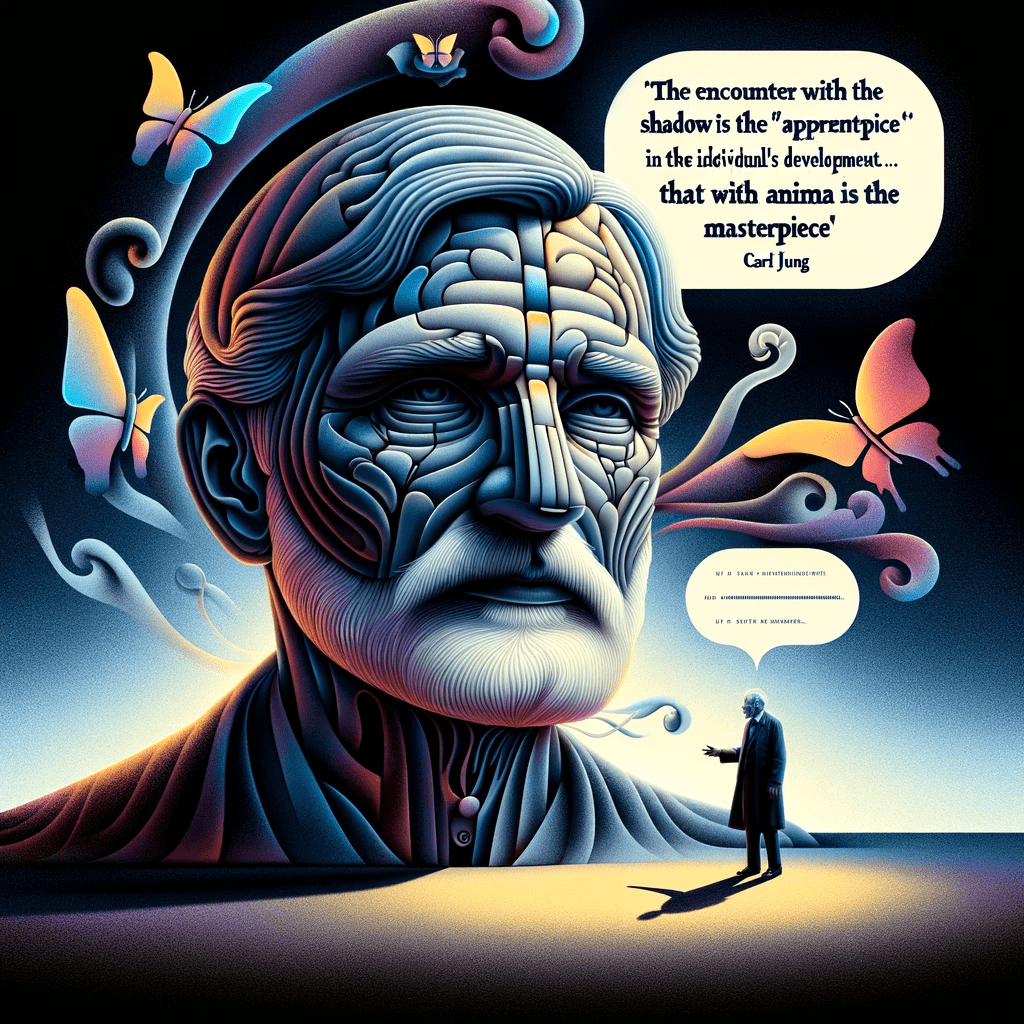

“Connais-toi toi-même” (Know thyself)!
At INSEAD’s Fontainebleau campus, engrossed in my KDVI Leadership Report, a duality in perception emerged that jolted me out of complacency. While I had earned the admiration of my seniors and those who reported to me, a disconnect with my peers unveiled a previously unexamined aspect of my leadership persona.
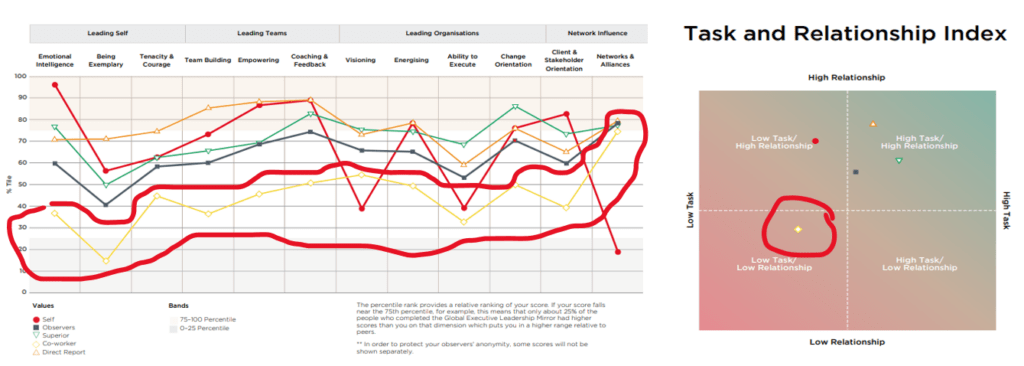
In the realm of my peers, I traversed from the low 10s to the early 50s and stayed in the low task/low relationship index zone. (as evident in the red area in the two graphs). The divergence was too significant to ignore and triggered my defense mechanism of rationalisation—was this simply a case of professional jealousy among peers?
“After all, I was always one of the top performers wherever I went.”, whispered my monkey mind. This easily digestible narrative, tempting as it was, felt superficial, almost like an attempt to shield my ego from acknowledging an unsettling possibility: perhaps I was not as universally effective a leader as I had thought.
Rationalisation is an ego defense in which apparently logical reasons are given to justify unacceptable behaviour motivated by unconscious instinctual impulses. Rationalisations are used to defend against feelings of guilt, maintain self-respect, and protect oneself from criticism.
As I resisted this urge to rationalise, I confronted a more profound, unsettling question: Was the dichotomy in how I was perceived rooted in an imbalance between the “masculine” and “feminine” archetypes of my leadership style? Inspired by Carl Jung’s constructs of Anima and Animus, I considered the possibility that these imbalances were not merely quirks but manifestations of deeper psychological processes and perhaps even personal traumas.
What Lies Ahead?

In the search for answers, we will
The Leadership Archetypes
Meet the leadership archetypes. Leadership Archetypes: An Exposition (Kets De Vries, 2005) provides a nuanced framework encompassing a range of leadership archetypes in exploring the intricacies of leadership effectiveness. These archetypes, each with unique strengths and weaknesses, are grounded in psychoanalytical theory and business acumen and offer a multifaceted view of leadership behaviours and their impact on organisational dynamics.
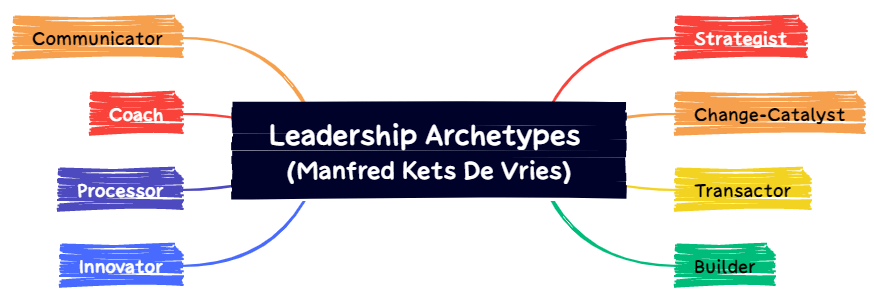
My leadership formed its first association with Communicator, and then Strategist was added to the forefront. With the advent of COVID, I extended my association to Builder. After losing my fiancé, my leadership became one with Coach.
The Evolving Leader
Meeting Communicator & Strategist
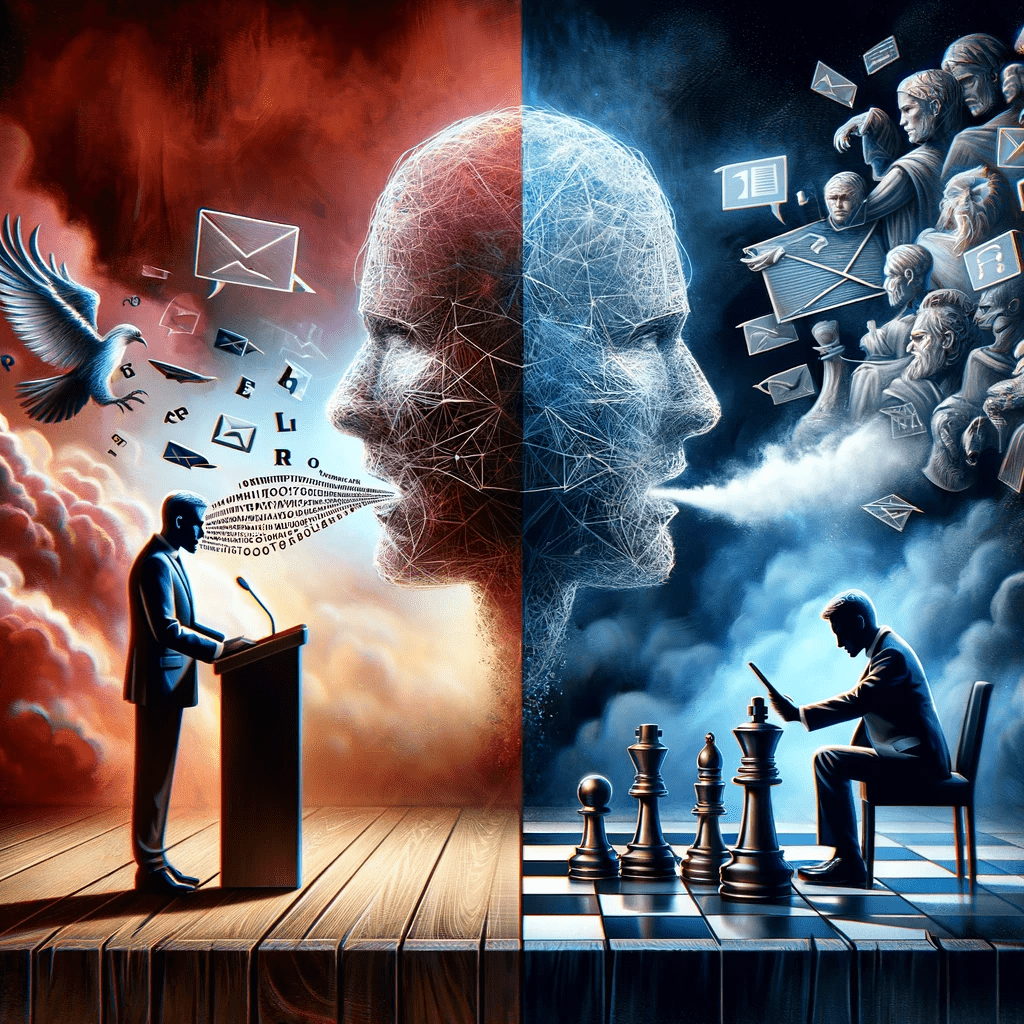
The association with Communicator runs deep in the firstborn sons of my family. Furthermore, being the firstborn in my generation, I was no different. Like my father and grandfather, I communicated the big picture well. I was talented in using simple language. I had a significant presence and knew how to attract the attention of others. In school, I was known for Impressive theatrical skills. I could quickly reframe difficult situations positively.
Influencing others came easily, leading to good networks and alliances. Right from my initial years in Infosys, I managed various stakeholders well. I effectively got people to see my point of view, holding me in debates and elocutions in good stead. On the flip side, I used to lack real focus and vision. I lacked a “True North” or inner compass. I would make commitments but would easily break them to serve my purpose.
During my stint with GE Healthcare, Medium Healthcare Consulting, and nCircle Tech, my conscious persona was strongly associated with the archetype Strategist. I became good at abstract, imaginative thinking with a long-term orientation. I developed the ability to see the big picture and plan accordingly. I became good at presenting all the options. I started simplifying highly complex situations while thinking globally. I undertook new things using unconventional thinking, solving challenging problems with agility. I could easily align vision with strategy.
However, I could not align vision and strategy with values and behavioural change. I would hate to be caught up in complicated interpersonal situations. I had a high IQ; however, emotional intelligence (EQ) left much to be desired. I preferred to ignore “softer” issues and avoid conflict. I would focus on facts and figures and abstract scenarios.
Nonetheless, the combination of Communicator and Strategist propelled me to professional success.
Meeting the Builder

While leading the Strategy office in nCircle Tech and starting my first startup, TalkDoc.AI, I started seeing the emergence of the builder in my personal unconscious. I needed to be independent. I would drive long-term focus with a high amount of energy. I could persevere while dealing with setbacks and ambiguity. I was motivated to create something. I always had trouble dealing with authority.
I was too assertive, too dominant, and too controlling. I was impatient to get things done, reflected my inner anxiety, and could not build authentic relationships. I lived with the illusion that no one can do things as well as I do. I was losing touch with the inner reality of situations.
So here I was, a hybrid of Strategist, Builder and Communicator. I was a competitive, charismatic visionary ready to take the initiative with resilience but lacked authenticity and emotional awareness both within and out. Even though the three archetypes had complimenting strengths to negate the respective weaknesses to a considerable extent. One key ingredient missing from all three was managing people authentically.
Communicator & Coach Takes Over
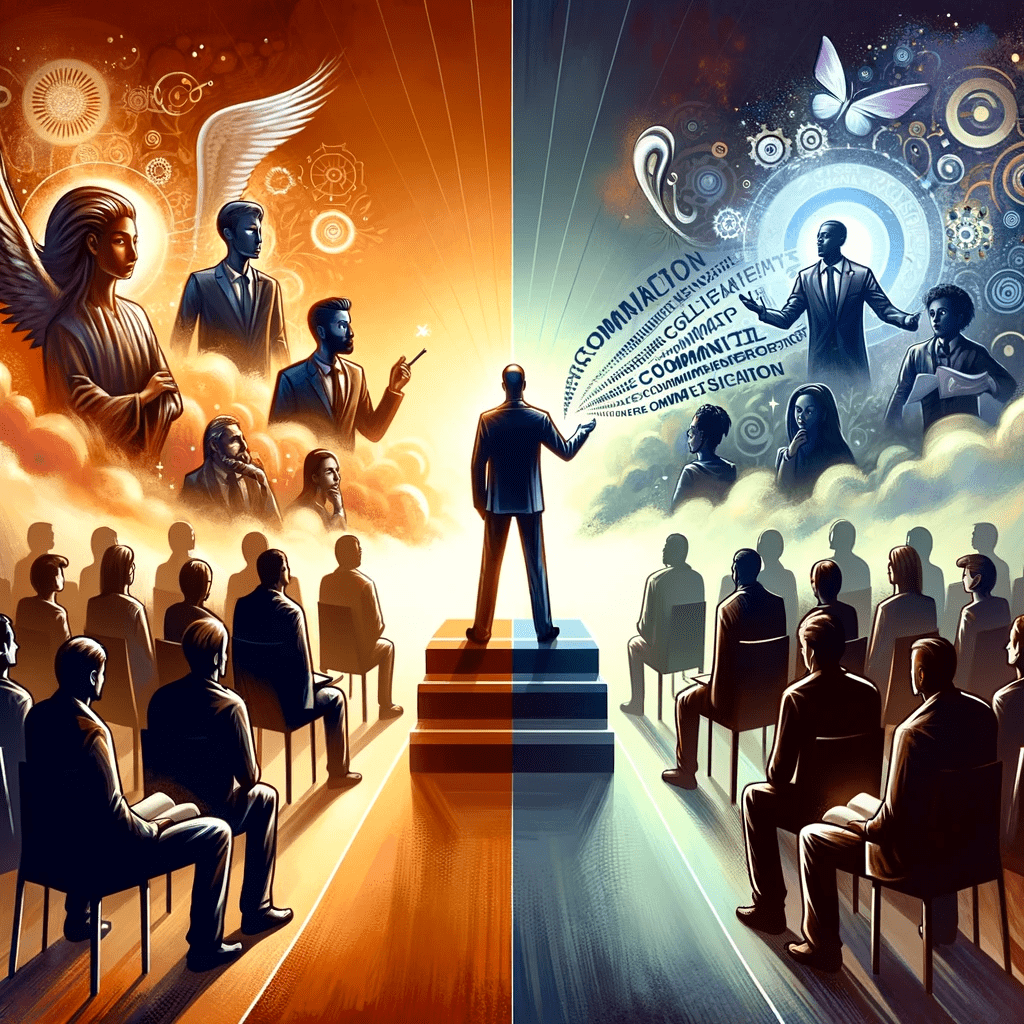
During my sojourn at KiNaB.in, my conscious leadership persona screamed the association with archetypes of Coach and Communicator. I became empathic and a good listener who inspired trust. I developed a strong affinity with people. I became adept at handling difficult interpersonal and group situations. I developed a positive outlook with a preference for participatory management. I started communicating and connecting authentically. On the flip side, I became too soft with my people. My sensitivity to others’ feelings made me careful in telling people how they are doing. I also over-identified with the people who work for me. I started avoiding telling people about their actual performance, protecting underperformers. I procrastinated about essential issues.
The questions that linger
The early associations with the Communicator and the Strategist have some similarities.
Manfred says there is frequently a history of grossly inadequate early parenting in the childhood of communicator archetypes, characterised by devaluation, rejection, humiliation and loss.
Did I face rejection and humiliation as a child?….Yes
Once again, our dear friend Manfred whispers that examination of the character development of Strategist suggests that this outlook might have been a way of coping with difficult family situations during childhood. It might have seemed easier to withdraw into fantasy life than to find solutions to complex family difficulties.
does this mean this archetype started forming in my unconscious during the complex family difficulties I faced in childhood? ….Yes
Manfred also suggests that the Builder has an aversion to authority, probably due to unresolved, conflicted relationships with the first authority figures they had to deal with: their parents or other caretakers.
Does this mean even the Builder Archetype started finding its roots in my personal unconscious due to my conflicted relationship with my parents and extended family? ….Yes
Moreover, how does a hybrid of Communicator, Strategist and Builder turn into a hybrid of Communicator and Coach? Let’s find out!
Introduction to Anima and Animus: The Shadow and the Persona

“The Anima and Animus are bridges to the deeper layers of the unconscious and our experience of life; by developing a relationship with them, we open a gateway to Self.”
Jung.
Before we whip out our magnifying glasses, let us demystify a couple of housekeeping terms—Anima and Animus.
According to Jung, Anima represents a man’s inner feminine qualities, whereas Animus stands for the inner masculine qualities within a woman. The Anima in a man exists primarily within the ‘shadow,’ that realm of our psyche where we shove all the traits we would rather not discuss. In contrast, the Animus for a woman lies similarly veiled.
However, based on the evolution of our understanding of gender and integration with Eastern symbols like the Yin-Yang and Shiva-Shakti, the modern interpretation dictates that everyone has Anima and Animus, irrespective of gender.
Let us begin with the assumption that when we are born, both Anima and Animus lie dormant in the collective unconscious. Our relationships with Anima and Animus are the dominant forces in our personal unconscious. The health of our relationship is dependent on our interactions with authority (female and male) figures, especially in the formative years, like- mother, father, and close family members.
Further, these are the types of relationships with Anima:
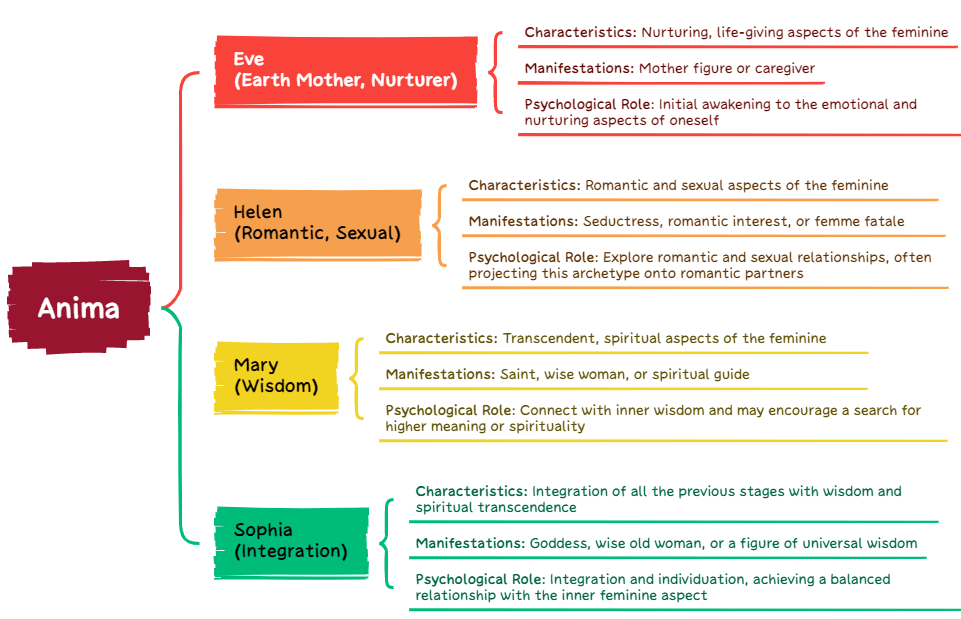
The relationships with animus are as follows
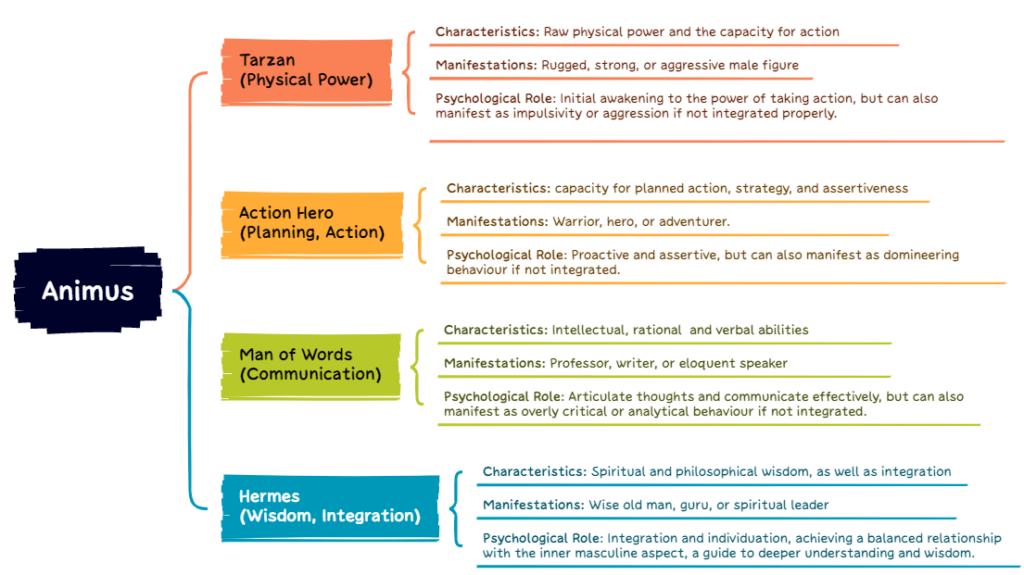
The Inner Theater
As per the leadership onion we have peeled off the layers of my leadership onion by consciously analysing my actions, determining the leadership archetype in play, and further drilling down to the layers of values, beliefs and character traits. Now, the stage is set for peeling off the layer of inner theatre. Now is the time to dive deep into the unconscious.

I believe the leadership archetypes in our personal unconscious are tied to our relationship with Anima and Animus. So, let us explore the evolution of my relationship with Anima and Animus.
Since I was a healthy firstborn in my initial years, I remember a loving and caring childhood till 1998. Until then, I would only go to school to play and connect with friends. Competition or academic excellence was never a priority. This shows that my relationship with Eve, the nurturer aspect of Anima, was strong. I was a happy-go-lucky kid connecting with everyone in my radius.

In the 6th year of primary school, due to financial constraints, my parents decided to send me to my maternal grandmother’s house. My maternal uncle took it upon himself to discipline me to make me competitive. He used the tool of physical assault to create an unhealthy relationship with the Tarzan (Power of taking action) and Action Hero (Planning, Action) aspect of Animus. To avoid getting beaten, I had to take action. I had to strategise and become the Hero to save myself. However, this unhealthy relationship with Animus manifested as aggression and domineering behaviour.
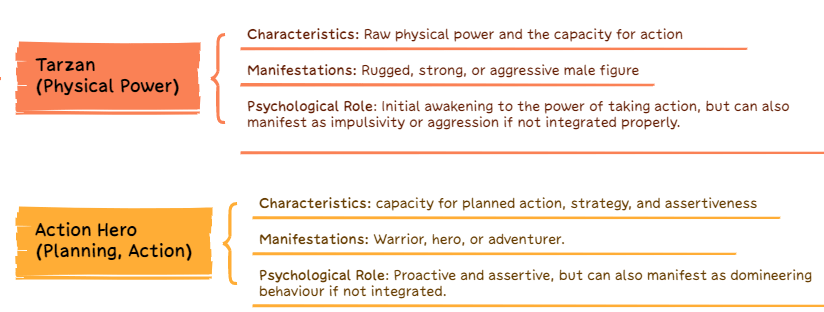
The betrayal I experienced as a child when my mother refused to believe I had tried committing suicide after being physically assaulted by her brother for almost a year corrupted my relationship with Eve. This further created another unhealthy alliance with Helen (Romantic and Sexual) aspect of Anima, creating an inauthentic relationship with others, only serving my shallow needs, devoid of significance or meaning.
This was also when my joint family started cracking due to financial instability. The interpersonal dynamics started turning toxic. All the authority figures (male and female) were busy fighting. As a result, my relationship with Anima and Animus was further disturbed. I could not feel any connection with Eve. Hence, my relationship with Helen only created transactional relationships. Even though I was proactively and assertively taking action, the unsteady integration of Tarzan and Action Hero aspects of Animus would create impulsiveness and aggression.

This cycle continued till I fell for my ex-fiance during lockdown. She was the force that guided me to awareness through spirituality. She first healed my relationship with Eve and Helen. She was the one to point out my unhealthy manifestations due to my troubled relationship with Tarzan and Action Hero.
This was the phase when I started associating with the Mary (Wisdom) archetype of Anima. My relationship with Man of Words became strong during this phase. The Tarzan and Action Hero improvements developed my rational, verbal and intellectual abilities. Still, sometimes, this would manifest into overtly critical behaviour. So, even though my relationship with aspects of Anima and Animus improved, the integration was not complete.

Then she passed away. The guilt associated with this event triggered reaction formation.
This defense mechanism comes into play when an individual confronts internal or external forces that challenge their self-concept. One may go to the opposite extreme to protect the ego, embodying traits that counteract previous behaviour.
I started focusing solely on forming authentic connections with myself and people. This integrated my relationship with Eve and Helen, allowing me to form a healthy relationship with Mary. I started feeling unconditional love for myself and others. My relationships became profound and beyond the realms of transactions.

However, the reaction formation had a suppressive effect on my relationship with Animus. Even though my relationship with Man of Words (Communication) is strong, my relationship with Tarzan and Action Hero had been entirely suppressed.
Connecting the Dots
So, let us consider my first hybrid of Communicator, Strategist and Builder.
| Archetype | Strengths | Weakness | Co Archetype |
| Communicator | Charisma, Networking, Optimism, Vision Casting, Resource Utilization | Inauthenticity, Inconsistency, Self-Serving, Lack of Follow-Through, Short-Term Focus | All especially Strategists Processor |
| Strategist | Visionary, Anticipative, Agile, Abstract Thinker, Global Outlook, Outcome Oriented | People Management, Emotional Intelligence, Details Negligence, | Coach, Processor, Communicator |
| Builder | Initiative, Resilience, Risk-Taking, Long-Term Focus, Adaptability | Authority Issues, Centralization, Impatience, Delegation, Reality Disconnect | Processor, Coach |
The strengths of a communicator indicate that there has to be a strong initial connection with Eve during the very initial years. The weaknesses show that this relationship becomes corrupted further down the line due to changes in family dynamics and situations, creating an inauthentic and transactional association with Helen. For strategists and builders, the strengths show a relationship between Tarzan and Action Hero. However, the weaknesses point out that this relationship was forged under the forces of family trauma.
Now let us consider my present hybrid of Leadership Archetypes- Communicator and Coach.
| Archetype | Strengths | Weakness | Co Archetype |
| Communicator | Charisma, Networking, Optimism, Vision Casting, Resource Utilization | Inauthenticity, Inconsistency, Self-Serving, Lack of Follow-Through, Short-Term Focus | All especially Strategists Processor |
| Coach | Empathy, Listening, Communication, Emotional Intelligence, Delegation | Indecisiveness, Over-Empathy, Softness, Feedback Avoidance, Crisis Management | Rest All |
The Coach and Communicator come across as close to perfect compliments. The weakness of the Communicator is quickly taking care of the weaknesses. This means that Eve, Helen and Mary have been integrated to a great extent, allowing me to move to connect with Sophia (Integration) Anima. This drives my individuation, achieving a balanced relationship with Anima, the inner feminine aspect. The communicator also points to a solid relationship with the man of words (communication).

However, the suppression of Strategist and Builder due to reaction formation points to the suppression of my relationship with Tarzan and Action Hero. This also hinders my relationship with Hermes (Wisdom, Integration), creating an imbalance with Animus.

The Paradox
While this approach made me more likeable among my peers, it also raised questions about losing certain decisive qualities that had once defined me as a leader. While emotionally enriching, this overemphasis on Anima led to a different kind of imbalance, affecting my effectiveness.
While my leadership saw improvements in empathy and relational intelligence, it also introduced new, challenging dynamics. Once heavily tilted towards masculinity, the pendulum swung too far in the opposite direction. The Anima, once a dormant component of my unconscious, now became the domineering force, creating a new layer of dissonance within me.
Individuation: My Evolution to LovinShip
My LovinShip archetype: Change-Catalyst + Coach + Communicator
The integration with Anima across Eve, Helen and Mary has developed the association with Coach. My strong relationship with Man of Words in Animus creates a strong association with Communicator. However, I need to combine Coach with Strategist to be a change catalyst. So, I need to reawaken my strategist leadership archetype. I must nurture and develop healthy relationships with Tarzan and the Man of Actions in Animus for this.
After peeling all the layers of onions, we seem to have established a working correlation between the Leadership Archetypes and the archetypes of Anima and Animus. Here, we could relate how communicator, strategist, builder and coach archetypes have their footing with our relationship with different aspects of Anima and Animus. Further research is warranted for exploring the remaining four leadership archetypes of Innovator, Transactor, Processor and Change Catalyst.
We keep moving forward on my journey of individuation by integrating Anima (Eve, Helen, Mary and Sophia) and Animus (Tarzan, Action Hero, Man of Words, Hermes) with all of their respective forms.

“The encounter with the shadow is the ‘apprentice-piece’ in the individual’s development … that with the anima is the ‘masterpiece.'”
Jung.

“The sea, once it casts its spell, holds one in its net of wonder forever.” Jacques Cousteau In an era when technology was beginning to shrink it, Jacques Cousteau expanded the world. […]

“Born in 1927 in Nice, France, she was just 16 years old when the Nazis stormed into her life, tearing her family from their home and dragging them into the dark abyss […]

“Is there another way beyond our traditional understanding of managing transitions while change happens?” Kushagra Patwa, Head of Spiritual Advisory Introduction Three leadership skills explored that have resonated deeply with me: ‘Change […]